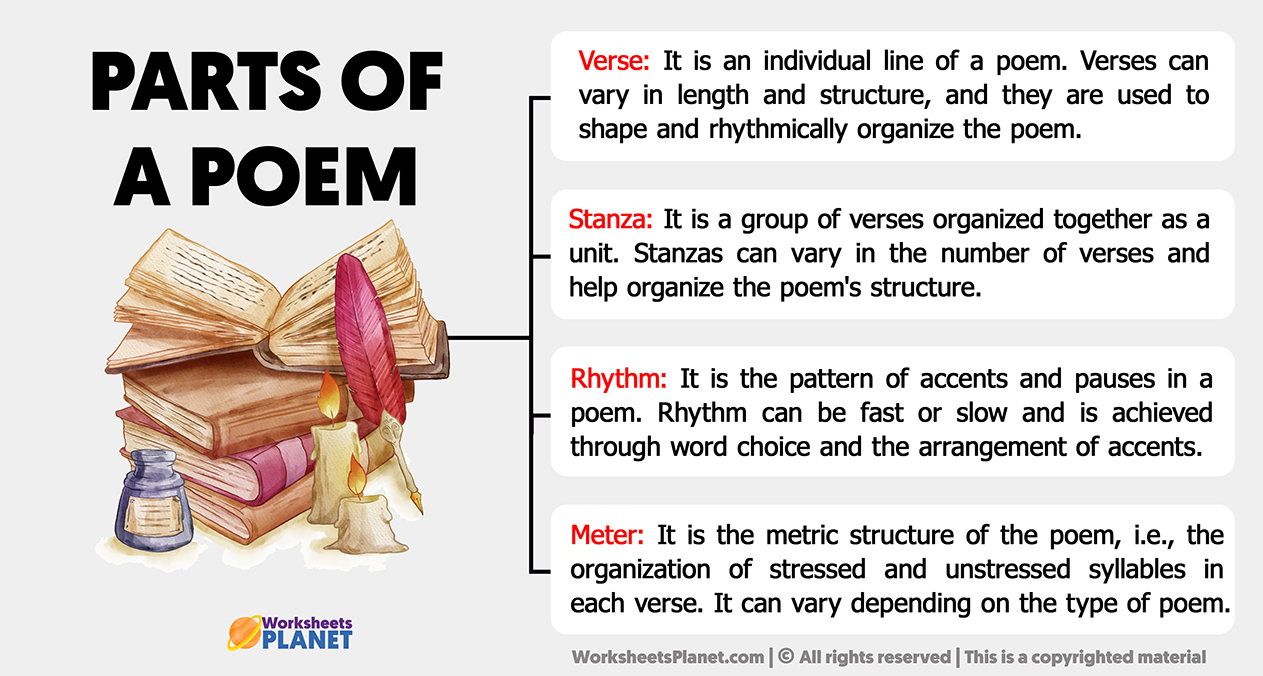A poem is a literary form of artistic expression, typically characterized by structured language, rhythm, and often, rhyme. It conveys emotions, ideas, or narratives through creative use of words, evoking imagery and sensory experiences.
Poems vary in style and structure, ranging from traditional forms like sonnets to free verse, allowing poets to explore diverse themes and convey unique perspectives with linguistic and emotional resonance.

- Verse: It is an individual line of a poem. Verses can vary in length and structure, and they are used to shape and rhythmically organize the poem.
- Stanza: It is a group of verses organized together as a unit. Stanzas can vary in the number of verses and help organize the poem’s structure.
- Rhythm: It is the pattern of accents and pauses in a poem. Rhythm can be fast or slow and is achieved through word choice and the arrangement of accents.
- Meter: It is the metric structure of the poem, i.e., the organization of stressed and unstressed syllables in each verse. It can vary depending on the type of poem.

